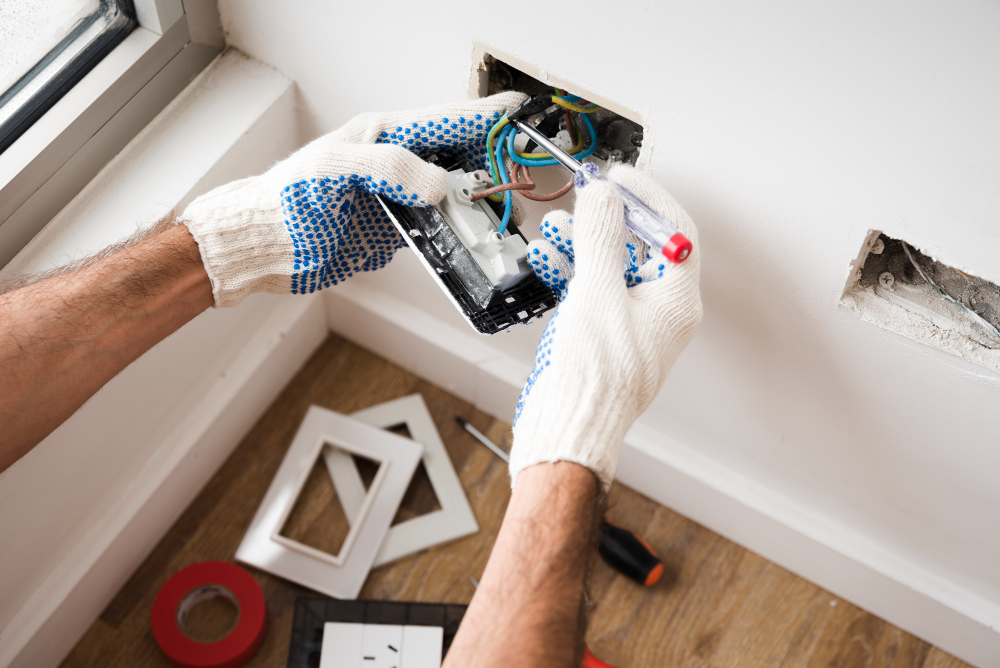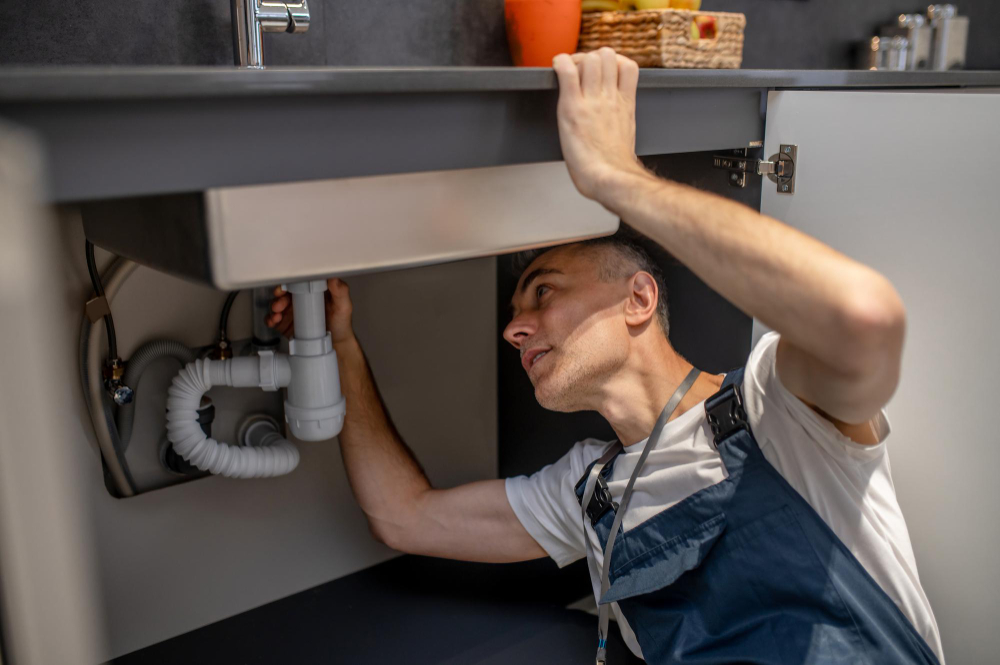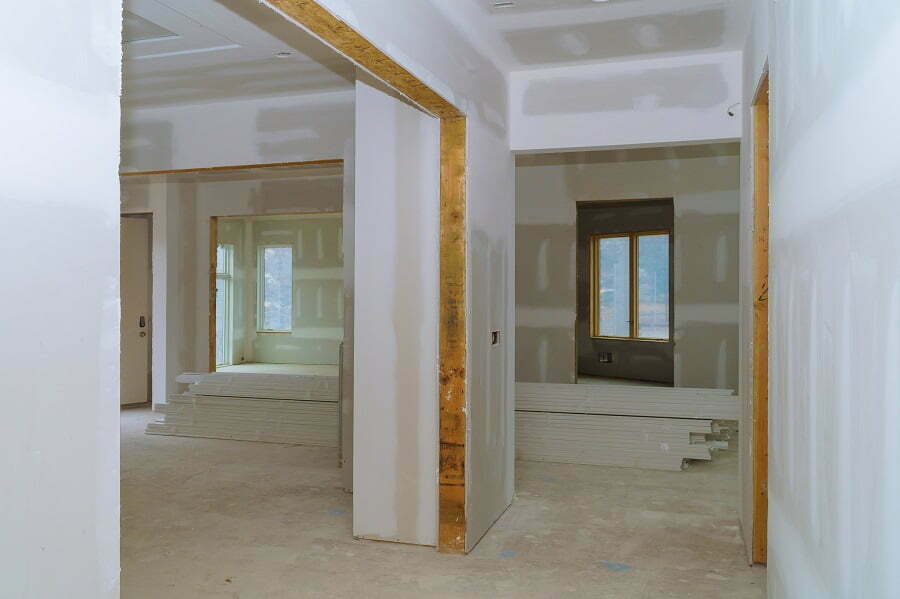Last updated on
Imagine, you’ve finally closed the deal on that 19th century townhouse you’ve been eyeing for years, and you’re moving in next week. You’ve ordered all new furniture, new wallpaper, and carpeting; your interior decor ideas are about to go through the roof!
But, as soon as you walk through the doors, you’re alarmed by an awful stench, and then you hear faint sounds of water dripping. You flip the switch, and that one fizzling bulb goes out instantly. What are you going to do?
Don’t stress out; All hope is not lost!
Repairs are almost always a must when you move into an old house. Whether it’s the structure, plumbing, wiring, or the floors, just know that you have to spend some money on repairs.
But don’t worry, you don’t have to walk around knocking on the floors and turning every knob to see what needs fixing. Let us reveal to you the ten essential repair works to consider after moving to an old house.
Wiring and Electricity System

The first repair you need to consider after moving into an old house is to get a thorough electrical system inspection.
For this, you must hire an expert and professional electrician to assess the condition of your wiring, outlets, and the entire electrical panel of the home.
This inspection will reveal outdated and dangerous parts that might need urgent attention. An electrical inspection is important because older homes don’t tend to have current or updated wiring layouts that meet the safety and quality standards today. These dated systems can lead to fires and other potential dangers.
Plumbing Problems

The next but equally important concern to address is plumbing. Hire a licensed and professional plumber to check the condition of the pipes, fixtures, and drainage systems. Old houses will often have old-fashioned attachments and might be rusty, an inspection will identify those problems.
So, make sure to get a professional plumbing inspection when you move in. Seasoned plumbers can take care of any leaks and clear blocked drains that can cause a world of problems for you and your new home.
Inspect the Roof

Before you settle into your new home, make sure to get a roof inspection done. You already know the damage roofs can incur from years of sunlight exposure, rain, snow, and regular wear and tear.
A roof inspection will take care of serious issues like cracked or missing shingles, sagging areas, and water damage. By getting a professional roof repair done, you can get rid of these issues that can turn into a disaster if not dealt with properly.
Faults in the Foundation

This is another very important step in your repair process. You must get a professional inspection done on the foundation of your old home.
Your new home is, well, old! And, the foundation of older homes might be made from materials like stone, brick, or concrete that have obviously aged over the years. Cracks, shifts, or signs of moisture inside the homes are dead giveaways that the foundation needs help.
Foundation repairs will depend on how severe the signs are, from minor crack sealing to replacing a whole structure; a structural engineer will know what needs to be done.
Small cracks can be repaired within days, while more serious repairs of structural problems might take weeks or months. So, make sure you address issues before moving in!
Heating and Cooling Systems
We know that you wouldn’t want your heating or cooling systems to falter when you move into your “new” old house!
That’s why it’s crucial to have the system in the house checked out by an HVAC expert. Old components and panels might be outdated, so it’s best if you can start anew and replace them with newer installments.
Windows and Doors
Let’s not forget about your doors and windows amidst all the other repairs because they’re just as essential! Old houses often have wooden frames that could have rotted or become damaged over the years.
Be very careful about opening and closing doors and windows in old houses since they can come off and end up hurting you!
Check if there are cracks, paint chipping, missing putty, or loose clasps that can prove to be physical hazards.
Consider having professionals come in and check the integrity of the doors and windows, their attachments, and features. If you want to refurbish and revamp the windows and doors, let the repairmen know.
Mold and Asbestos
Two things you can be sure to find in an old home are mold and asbestos. These two grow from poor ventilation, water damage, and outdated construction materials.
Hire mold and asbestos remediation experts to target these serious problems at the source and make sure they don’t come back.
Remember, if you have a serious mold and asbestos problem in your aged house, it’s must get it removed professionally; don’t even attempt any DIYs because it will only make things worse!
If mold and asbestos persist inside your home while you are living there, they can give you severe health issues.
Mold spores are notorious for respiratory issues and allergies while breathing in asbestos fibers can cause you to develop asbestosis and even lung cancer from prolonged exposure. In fact, it can lead to cancer in the digestive system, including liver or colon cancer!
Pests
Have you been greeted by some unwanted residents in your “new” home? As gracious a host as you may be, these aren’t the guests you’d want to entertain! Pests can be a nuisance for many reasons, like causing damage to your furniture, making your home filthy, and posing serious health risks.
Older houses are likely to have more pests because, for one thing, they’re aged and tend to be structurally vulnerable, making it easier for pests and critters to come in. It can also be due to the house having no visitors and residents for a while, making it the perfect playground for pests.
So, the first thing you have to do is get a professional inspection, followed by pest removal. Remember, you are no pied piper! The chances of you being able to chase out rats, bats, and raccoons (among others!) on your own are next to impossible.
Infestations must be taken seriously Just like all of these repairs, you must consider bringing in experts.
This is something that should be taken care of even before moving in. However, sometimes an infestation can remain undetected like some pesky ghost until you have actually lived inside the house!
Insulation
Older homes might have outdated or insufficient insulation, which can lead to high energy and heat loss, and even higher utility bills.
There might also be drafts and air leaks around the windows, which can let the cold air in during winter months and make it uncomfortable for you to live cozily in your “new” house. So, sealing and insulating the home is quite an important task when you move into your new old home.
This is where (you guessed it!) the professionals come in. These folks are trained and specialized in ensuring that every corner of your home is insulated so you don’t face any issues when winter finally creeps in.
Other Cosmetic Repairs
Cosmetic repairs are also essential when you move into a new home.
From refinishing hardwood floors to repainting walls to updating kitchen and bathroom fixtures, these changes help your home look and feel as good as new!
Consider preserving the vintage design elements, as long as they’re not a risk or cause a problem later on. You can restore any original architectural features, like molding, trim, or built-in cabinets, to maintain the house’s vintage and antique charm.
The Takeaway
We hope this guide becomes helpful and informative for you when you finally move into your new home. Now that you know what needs to be done, consider making these repairs as soon as you move in so that none of these issues creep up on you unexpectedly.
The last thing you want is to have to move out of your dream home for days or weeks to get things repaired and fixed right after moving in!
Some of these problems can be quite serious, like molding can give you respiratory problems and prolonged exposure to asbestos can even lead to cancer! We want you to move into your new home without worry, and our guide is here to make sure you’ve ticked everything off.
Related reading:
Table of Contents





